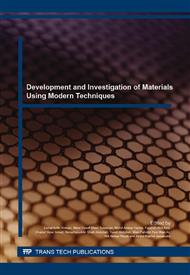p.289
p.294
p.299
p.305
p.309
p.315
p.321
p.326
p.331
Effects of Soil Physical Properties to the Corrosion of Underground Pipelines
Abstract:
Corrosion of metals in soil be able to change from comparatively fast material loss to insignificant effects, depending on soil environment. Corrosion is a process of deterioration of metal surfaces degraded into another compound. Soil is one of the medium known to have constituted to corrosion of metals. The soil creates an environment for the corrosion to react. The buried pipelines are exposed to the soil that may experience corrosion attack. The study of the soil as corrosion environment is important to mitigate the problem due to the environment and economy. There are factors that contribute to the corrosion process. This study concentrates on corrosion properties that expose to soil environment particularly underground pipelines. The mild steel coupons taken from actual pipelines, stimulating and analyzing the physic-chemical characteristics of the soil environment. The soil is sandy clay in natural. A total summed index of 2 numerical scale, thus, indicates that the soil tested was mildly to non-corrosive. The corrosion rate increase with increasing of moisture content and pH value. The observations on the coupon surface also did in order to study the morphology.
Info:
Periodical:
Pages:
309-314
Citation:
Online since:
January 2016
Price:
Сopyright:
© 2016 Trans Tech Publications Ltd. All Rights Reserved
Share:
Citation:


